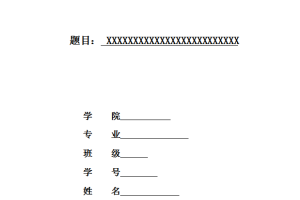摘 要
本文对石圪节矿区徐家庄石灰岩含水层组和中奥陶系石灰岩含水层组水文地质特征及对下组煤开采的影响进行了研究。我在石圪节煤矿公司的工作属于1930山西省潞安矿业集团投资,有80多年的开采历史。近年来,煤矿集团煤炭资源已近枯竭,煤矿用少量的煤柱和矿山开采的资源回收生存的兄弟。为了延长矿井寿命,保证员工的权益,公司决定对下组煤开采,煤级组的扩展。然而,在下组煤开采,遇到各种各样的困难,包括自然地质条件,技术条件,设备条件,资金等,以及各种复杂的地质条件下开采的影响是最重要的。
基于现有的数据收集和数据系统,矿区徐、奥灰的厚度,岩性和水进行了研究,分析了徐水平,奥陶系灰岩含水层的变化及变化原因,并含矿区水文地质分区;下组煤和徐汇,之间的厚度奥陶系灰岩含水层,岩性和变化进行了分析,并综合,隔水层综合评价;在水压力的综合考虑,含水层的富水结构的影响,防水层,防水等,采用工艺水系数法,对徐的计算与分析,奥陶系灰岩水对下组煤开采的影响,根据涌水量的预测开采实践研究区,并预测了下组煤各煤层底板的突水危险区;提出了徐、奥灰水防治的技术途径。
整体研究思路:矿区及其附近的钻孔数据集,所有的水文地质勘探资料,沉积,构造地质分析方法,结合地球物理勘探,许下煤层含水层喀斯特裂隙的分布特征,研究和分析,奥灰水力之间的接触,下组煤徐,奥陶系灰岩的厚度,压力变化的特点;结合现有资料,利用多源信息融合预测徐、奥灰的富水性分布规律。
通过数据分析和文献下组煤层地板的抗水性能之间的层中含有的评价,岩石力学,断裂力学的基础上,构造地质学、沉积学等多学科的方法,明确的突水因素的主要影响,采用主成分分析方法确定主要影响因素的权重因此,对底板突水预测,和突水系数法计算的结果进行比较分析,找出最佳的预测结果。
通过地质、水文地质资料的全面收集,奥灰水的地质特点,徐汇的深入分析,田间试验和计算机测试方法,室内模拟相结合,通过许晖分析和评估下组煤开采,奥灰水的影响程度,矿井水的预防和控制的关键技术参数下的群体,具体内容如下:
1、开采下组煤层的主要技术参数有:下组煤层开采:隔水层厚度及其变化,为性能不同的开采造成的底板破坏;开采深度;含水层的电梯,然后在采高条件。各种关键技术参数之间的关系,确定采下的矿区煤炭开采技术参数组。
2、底板突水机理及底板突水风险评价:正常的地板和地板水故障条件下优异的条件,底板突水破坏的特殊规律的条件下。综合各种充水因素,使和底板突水危险性预测评价。
关键词:下组煤开采;地下水模拟系统;渗流场;底板突水危险区;防治水技术。
ABSTRACT
In Shigejie mine hydrogeological characteristics of Xujiazhuang limestone aquifer and Ordovician limestone aquifer, the influence of the mining of lower coal group is studied. ShigeJie coal mine belongs to Shanxi Province LuAn group 1930 investment of mine, has more than 80 years of mining history. In recent years, the no. 3 coal mine resources has nearly dried up, recycling and coal pillar mining brothers of mine a few resources to survive. In order to prolong the life of the mine, ensure that the interests of employees, the company decided to stone GeJie coal company as pilot, coal mining lower coal group, the next set of extending the deep in the coal level. The next group of coal mining, however, encountered all sorts of difficulties, including the natural geological conditions, technical conditions, equipment conditions, money problems, etc., including the influence of various complex geological conditions of mining is one of the most important.
First, in system of the mine were collected in the study area of geophysical prospecting, drilling data and information, counter of study area of Xujiazhuang limestone aquifer, Ordovician limestone aquifer lithology, thickness, wateryieldproperty was studied,analysis of the status and reasons of aquifer water level change, and hydrogeological partition; counter of the study area between the aquifer and the lower group coal lithology, thickness of aquifuge and change are analyzed, and makes a comprehensive evaluation of water resisting properties of aquiclude; considering the wateryieldproperty of aquifer, construction effect, pressure, watertightness of aquifuge and other factors, the process stream number analysis method affected by the degree of the study area coal mining group, according to the specific mining level are expected to meet the requirements of the water inflow pressure, predicted lower group coal each coal seam floor water inrush risk areas; puts forward prevention measures of prevention water.
The overall research ideas: collect mining field and its near all of the drilling data, hydrological geology and exploration data, the sedimentary and structural geology analysis method, combining with the geophysical exploration, research and analysis group of coal bottom aquifer under karst fissure distribution characteristics, hydraulic connection of Xujiazhuang limestone aquifer and the Ordovician limestone aquifer, Lower group coal seam to the aquifer thickness, pressure variations; Combined with the existing data, the use of multi-source information fusion prediction the water content distribution law of gray.
Through data analysis and the literature on the group of bottom resistance between coal seam and aquifer water performance evaluation. In rock mechanics, fracture mechanics, structural geology, sedimentology, on the basis of multidisciplinary comprehensive methods, such as to determine the main influencing factor of the inrush, principal component analysis (pca) is used to determine the weight of the main influence factors, and to forecast the inrush. And results and the water inrush coefficient method to the evaluation results were analyzed, finding the best prediction results.
By comprehensive collection of geological and hydrogeological data, in-depth analysis of the hydrological geology characteristics, using field measurement, indoor experiment and computer simulation, to analyze and evaluate the lower group coal mining influence, discusses the key technique parameters of lower group coal mining water prevention and control, the specific contents are as follows:
Group of coal seam mining under 1, the key technical parameters include: thickness of water-resisting layer and its change, waterproof performance of water-resisting layer; Different ways of coal floor damage caused by mining depth; Aquifer and lift and mining under the condition of guide rise again.2, floor water inrush mechanism and water inrush risk assessment include: under the condition of normal base plate and the existing conditions and fault condition of bottom water inrush crack conditions special rules such as “integrated water filling factors, to highlight the dangers of bottom water forecast evaluation.
Key Words: Mining lower coal;Groundwater simulation system; Seepage field; Inrush of danger; Prevention and control of water technology。
目 录
第一章 绪论……………………………………………………………………………………………… 1
1.2.1 国外研究现状……………………………………………………………………….. 1
1.2.2 国内研究现状……………………………………………………………………….. 3
第二章 研究区概况……………………………………………………………………………………. 5
2.1.1研究区地理位置与交通……………………………………………………………. 5
2.1.2地形地貌研究区概况……………………………………………………………….. 5
2.1.3河流…………………………………………………………………………………….. 5
2.1.4气象…………………………………………………………………………………….. 6
2.1.5地质概况………………………………………………………………………………. 6
2.2.1区域水文地质条件分析……………………………………………………………. 8
2.2.2煤田水文地质条件分析……………………………………………………………. 9
2.3.1 煤层………………………………………………………………………………….. 12
2.3.2 煤层对比……………………………………………………………………………. 13
2.3.3 煤质………………………………………………………………………………….. 14
第三章 徐、奥灰水文地质特征…………………………………………………………………… 16
3.1.1徐灰岩性、厚度及其变化特征…………………………………………………. 16
3.1.2徐灰富水性及分区特点………………………………………………………….. 17
3.1.3 水位变化情况及原因…………………………………………………………….. 18
3.2.1含水层段划分………………………………………………………………………. 19
3.2.2富水性及分区特点………………………………………………………………… 20
3.2.3水位变化…………………………………………………………………………….. 21
第四章 下组煤开采的关键参数研究…………………………………………………………….. 24
4.2.1地质构造与底板突水的关系……………………………………………………. 26
4.2.2井田地质构造分形特征………………………………………………………….. 26
4.3.1底板隔水层厚度变化特征……………………………………………………….. 28
4.3.2 地质构造对阻水性能的影响…………………………………………………… 31
4.3.3水压对阻水性能的影响………………………………………………………….. 32
4.3.4 开采活动对阻水性能的影响…………………………………………………… 32
4.3.5底板岩层阻水性能综合评价……………………………………………………. 32
第五章 徐、奥灰水对下组煤开采的影响评价………………………………………………… 33
5.1.1下组煤到奥灰的隔水层厚度及变化…………………………………………… 33
5.1.2下组煤到奥灰的隔水层厚度及变化…………………………………………… 34
5.1.3 徐灰——奥灰间的隔水层厚度及变化………………………………………. 36
5.3.1下组煤开采受徐灰影响程度分析……………………………………………… 37
5.3.2下组煤开采受奥灰影响程度分析……………………………………………… 38
第六章 下组煤开采中灾害防治技术…………………………………………………………….. 41
6.1.1重视矿井防治………………………………………………………………………. 41
6.1.2建立观测系统………………………………………………………………………. 41
6.2.1 改造底板注浆……………………………………………………………………… 42
6.2.2 疏水降压……………………………………………………………………………. 42
第七章 结论……………………………………………………………………………………………. 44
致 谢………………………………………………………………………………………………….. 45
参考文献………………………………………………………………………………………………… 46





